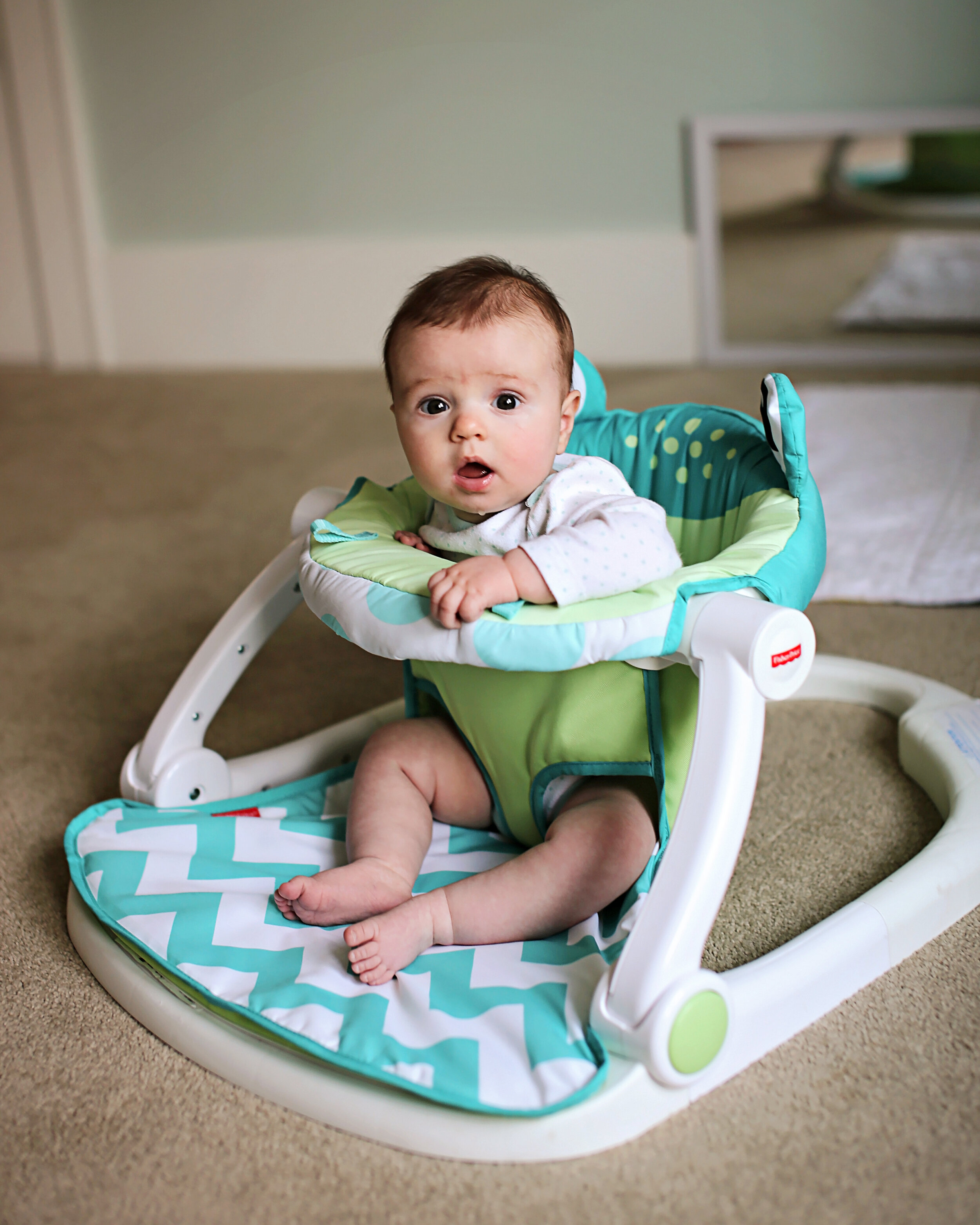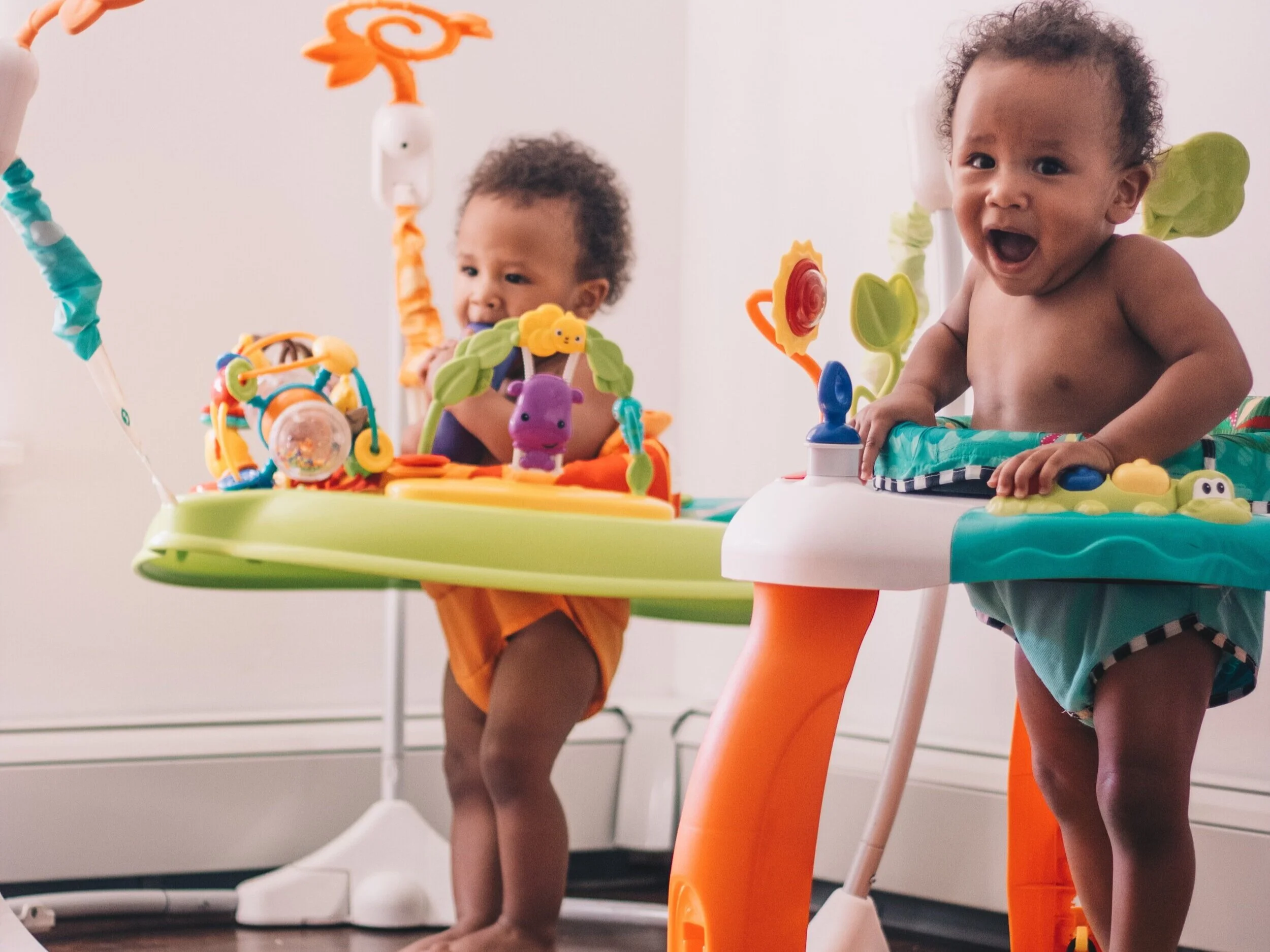Choosing The Best Baby Seat - And Using It Wisely
UPDATE: Several years ago, at the time I wrote this article I was very much on a mission to answer the questions I was receiving from parents. So I got nerdy and granular, using my OT lens to dissect different seats on the market. I’ll leave the original content because it is factual but I’d like to bookend it with this:
If you are reading a blog post about which baby seat is best for development, you most likely don’t need more fuel the analytical parts of your brain. You most likely don’t need me to reinforce the idea that if you don’t do every.single.thing. “right” your baby will have a developmental issue. What you most likely need to hear is this…used in moderation, no single piece of baby gear will derail healthy development. The primary problem with baby gear is that modern babyhood isn’t using this piece of gear vs. that piece of gear. The primary problem with baby gear is that it is collectively overused.
Don’t get hung up on this product vs. that product. Prioritize time outside of baby gear when you can. When you need to, use gear your baby is developmentally ready for and don’t criticize yourself for using it.
While baby seats are definitely not a necessary piece of equipment and don't truly help your baby learn to sit up, they can be helpful and convenient for parents - and fun for babies. Here are three factors to consider when purchasing a baby seat as well as recommended seats plus some tips for using them in moderation and a few alternatives to consider.
The Sitting Surface
Some chairs for babies put little bodies in unnatural and unhelpful sitting positions. The original molded foam Bumbo is the most popular of this sort. It has a scooped out “bucket seat” that allows people to put babies in them before baby is developmentally ready for sitting in a seat.
But poor positioning of the pelvis affects the posture of baby’s whole body and leads most often to a rounded back and some squishing of the back of the neck (nerdy therapist term: neck hyperextension).
I enlisted the help of my toddler to show what this tipped back position of the pelvis (nerdy therapist term: posterior pelvic tilt) does for posture as a whole. The line at the bottom highlights the tipped back position of his pelvis. You can see that to stay upright, he has to round his back and then to compensate for that rounding, he has to compress the back of his neck to keep his head level.
This positioning makes it harder for baby to optimally coordinate and use muscles of the arms, hands and mouth. This is one of the major reasons I strongly discourage parents from using a Bumbo or similar seat as a feeding seat for baby. Now, is using this type of seat going to derail healthy development? No. But too much time in this position may contribute to long term poor posture and eating in this neck extended position increases a child’s risk of choking.
BUYING TIP: Choose a baby seat that has a flat sitting surface where baby’s bottom will be, like the Fisher-Price Sit-Me-Up Floor Seat or the Upseat. Wait until baby is showing signs of readiness before using a baby seat.
Leg Position & Support
Since babies learn to sit by using their legs and feet as sitting surfaces (not just their bums), the best baby seats are those that allow baby’s entire legs and feet to be in contact with the sitting surface. This gives them a bigger sitting surface (nerdy therapist term: base of support) and more of their body to use to balance.
Also look for a seat that allows baby's legs to move a bit instead of being completely immobilized (as with the traditional foam Bumbo).
BUYING TIP: Choose a seat that supports under baby's legs and allows them to move, like the Upseat or the Fisher-Price Sit-Me-Up Floor Seat.
Arm Support
Since babies just learning to sit are hardwired to wobble, the best baby seats are those that allow for some of that wobbling to occur. In order for a baby seat to safely allow wobbling, it needs to allow baby to use their arms to help correct wobbles (and avoid slumping and slouching).
The positioning and arm use won’t be the same as practicing prop sitting or independent sitting on the floor with your help or supervision (what I like to call "sitting practice"), but having a support surface for baby’s arms most closely resembles the developmental work they’re ready to do.
BUYING TIP: Look for a seat with steady and substantial chest-level tray or support, like the Fisher-Price Sit-Me-Up Floor Seat or the Upseat.
My Favorite Baby Seats and Alternatives
This page includes affiliate links, which means I earn a small commission when you purchase products through these links. I only link to products I use or love. Thanks for supporting CanDo Kiddo. See my disclosure page for more information.
My husband rolled his eyes every time another new Amazon box arrived. "Another baby chair?" he'd ask. But I was determined to try as many seats as possible to find my favorite one. So here are two of my favorites based on the considerations we've talked about (none of them are 'perfect' but stood out among the rest):
Fisher Price Sit-Me-Up Floor Seat - You've probably guess by now that this is my favorite choice for a floor seat for babies.
Summer Infant 3 Stage Super Seat - look for the models that come with a play tray for arm support.
Updated to add a few more seat options:
Since writing this post I’ve tried out a few other products that I liked. The Galt Playnest is an inflatable ring with a zip-on fabric cover that has some cute little things for baby to play and look at. Think of it like a fabric covered inflatable pool ring. Because baby is sitting on the floor, the Playnest offers a flat sitting surface and freedom to move the legs. It gives baby plenty of opportunity to wobble and allow baby to use hands on the floor or on the inflated nest.
And The Upseat was developed by a physical therapist. Don’t be fooled by the molded foam that looks a bit like the original Bumbo seat. The Upseat supports baby in good positioning.
Alternatives to a baby seat:
If you're a regular reader here at CanDo Kiddo + Family, you know I'm a baby gear minimalist and love finding things around the house to use with babies instead of making new purchases. Whether you're striving to do more with less, trying to stay within your budget or just don't have room for all this stuff, there are several household items that work great for supporting a wobbly sitter. I shared several of the alternatives I used in this guest post for Mama OT.
I also LOVE Toki Mats for the large safe fall-zone they provide wobbly sitters. Bonus points for being made of organic and natural products and for being a mama-owned business.
Using Baby Seats Wisely
My biggest tips for wise use of baby seats are:
WAIT UNTIL BABY IS READY FOR A SEAT (learn the signs here)
BE SURE TO PROVIDE PLENTY OF DAILY "SITTING PRACTICE" (get tips here)
AIM TO USE A BABY SEAT ONLY WHEN YOU NEED TO
I love a tip from a reader on the CanDo Kiddo Facebook page who said she used her baby seat by the back door to give baby a safe spot while older siblings got shoes and coats on to get out the door! Baby seats aren't BAD when used in moderation. Some are definitely better than others but a few minutes in any seat a day won't ruin your baby's development. My hope is that you would make informed baby gear decisions that work for your family!
Remember, your updated takeaway is…
Don’t get hung up on this product vs. that product. Prioritize time outside of baby gear when you can. When you need to, use gear your baby is developmentally ready for and don’t criticize yourself for using it.
Not sure what gear baby is developmentally ready for?
I’ve created a guide for that! A nerdy overview of baby gear and early development to help you choose and use baby gear wisely.






